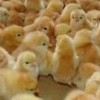
News briefing:

News briefing:
The native chicken is to put the chicken seedlings in the nature to ensure its healthy growth under certain artificial intervention. It not only ensures the freshness and tenderness of its meat, but also reduces the management cost. In addition, the price of the native chicken itself is not low, and the economic benefit is relatively high. Next, what are the production characteristics of native chickens? What are the factors that affect the benefit of native chicken breeding?
What are the production characteristics of native chicken?
1. There are many varieties and uneven performance. There are about 130 species, and the production performance of different varieties is very different, that is, the individual production performance of the same group is also very different. Therefore, choose a good variety.
2. The group is mixed and the overall degree is poor. There are few breeder farms for artificial selection of native chickens, and the varieties on the market are mixed, and the feather color, appearance, production performance, and body weight are extremely irregular.
3. Low production performance. High-quality broiler chicken 180-day-old rooster weighs 3.5-4.0 kg, hen weighs 2.4-3.0 kg; meat-and-egg type produces 140-160 eggs per year, adult rooster weighs 3-3.5 kg, hen 2- 2.5 kg; high-quality laying chickens start production within 100-130 days, and produce 180-200 eggs per year. The 180-day-old black-bone chicken weighs 1.7-1.9 kg, the hen weighs 1.4-1.6 kg, and lays 120-150 eggs per year.
4. Strong survivability, but carry many pathogens. The long-term breeding and management of native chickens are extensive, with strong physique, strong adaptability, high vitality and strong disease resistance. However, the living environment is complicated and pathogen purification cannot be carried out, and may face a great risk of infectious diseases.
5. Unique feeding management and good product quality. Native chickens are grazing naturally, with free feeding as the main body, supplemented by artificial feeding. Exercise among mountains, grass, forests, and idle land, with sufficient sunshine and fresh air. It feeds on seeds, roots, stems, leaves, insects, and minerals. Artificial supplements are mostly corn, wheat bran, leftovers, vegetable leaves, and miscellaneous Grass, etc., without any drugs and additives. The products are pure and delicious and ecologically safe.
6. Reasonably adopt modern technology. Generally, modern chicken-raising technologies are used in the management, hatching, brooding, epidemic prevention, and feed preparation of breeder chickens, and traditional methods are used in the production process of broiler chickens and laying chickens to achieve unique quality.
7. Normally, it cannot be raised on a large scale. In particular, farmers generally choose 30-50 animals, and the scale of breeding should be determined according to the size of the pasture, generally no more than 50-60 animals per mu. Otherwise, it will increase the cost of feeding and affect the quality of the product.
What are the factors that affect the benefit of native chicken breeding?
1. The breed quality of the chicks. The breed determines the level of production capacity, and healthy chicks are a prerequisite for improving economic efficiency. Many farmers are looking for immediate benefits, buying inferior quality and low price, unreliable sources, and even infected chicks, resulting in failure. It is recommended to buy chicks from a reputable large-scale poultry farm or hatchery.
2. Disease prevention and control measures. Failure to control the disease often results in loss of money. Some farmers lack the concept of disease prevention and control, do not follow the procedures to regulate immunization, and the disinfection is not thorough. Failure to pay attention to environmental sanitation and remediation, failure to isolate and eliminate sick chickens in time, lead to the outbreak of infectious diseases, or the recurrence of diseases, which cannot be treated in time, and cause great economic losses.
3. Feed supply and quality. Under free grazing conditions, the supplementary feed is small, no processing, no mixing, and a single species. Under the conditions of large-scale breeding, the nutrition of native chickens almost comes from the feed, and more attention should be paid to the feed quality, the preparation and the rationality and stability of the feed formula and quantity.
4. Environment and breeding management. Including breeding facilities and equipment, brooding temperature control, ventilation and lighting, and some lack of breeding management technology, blindly expanding the scale, extensive management, affecting production and healthy growth.
5. Industrial development and marketing. Generally, the scale of local chicken farmers is small, and the number of products has no sales advantage in the market, and most of them wait for customers to come to buy. Adhere to continuous development, moderate scale, professionalization, and standardized production. Establish a cooperative to develop the marketing concept based on the brand cultivation of green, natural, good flavor, healthy, safe, and nutritious, unified brand, unified packaging, and unified sales, which can form a superior industry, make up for the low production performance of native chickens, and improve Economic benefits.
Date of opening:1970-01-01 Shop address: Main products: Store certification time:1970-01-01 08:00:00
Store Name: Principal: Contact number: email: